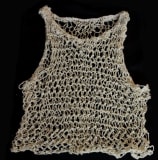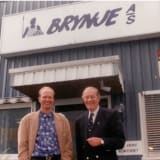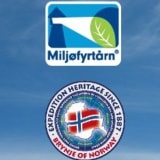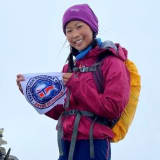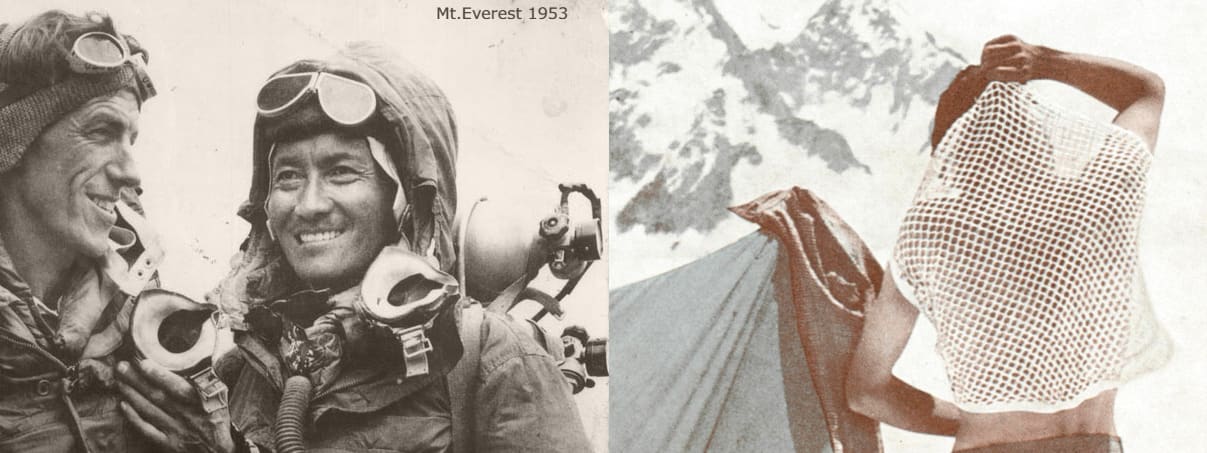
Historien om Brynje og helsetrøya
Familiebedriften Brynje of Norway fra Larvik har vært verdenskjent for kvalitet siden 1887. Da Tenzing og Hillary besteg Mt. Everest i 1953, var det med Brynjes helsetrøye innerst mot huden.
-
1887
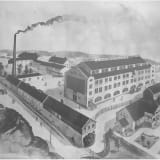
1887: Jacob Jacobsen stiger i land i Larvik
Jacob Jacobsen kom fra Jyllands største tekstilfamilie og var yngst av 20 barn. I 1887 reiste han fra storfamilien i Danmark og slo seg ned i Larvik. Han fikk norsk kone og barn og etablerte J. Jacobsen Trikotasje og Konfeksjon. Jacobsens kunnskaper, sammen med norsk ull, ble fort suksess. Den dag i dag er det fremdeles familien som sitter ved roret.
-
1921: Henrik Brun fra Uvdal fant opp historiens aller første helsetrøye
Henrik Natvig Brun ble født i Oslo i 1897 og fikk militær utdannelse fra befalsskolen og krigsskolen. I 1921 overtok han familiegården Lunda i Uvdal. Parallelt med gårdsarbeidet var Henrik opptatt av å finne ut hvordan det norske forsvaret kunne utrustes bedre. Det var spesielt ideen om bedre undertøy som opptok ham, og etter hvert utviklet han et plagg som lignet ringbrynjen til vikingene. Grunntanken var at det skulle være et stort, sammenhengende luftlag mellom klærne og huden på overkroppen som både kunne isolere og ventilere ut fukt. Han startet med fiskesnøre og gikk etter hvert over til bomull. Henrik Brun skal selv ha strikket over tusen Brynje-trøyer.
-
1928
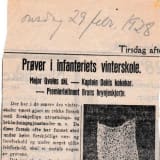
1928: Aftenposten skriver om test av Bruns trøye
Onsdag 29. februar 1928 skrev Aftenposten om Bruns grove bomullstrøye som skulle holde norske kampstyrker varme og klare for kamp. Dette er den første skriftlige kilden som er funnet om helsetrøya. Som premierløytnant hadde Brun prøvd ut trøyene på Infanteriets vinterskole i 1927. Responsen var god; trøya hadde «visselig gitt frelse fra mangen forkjølelse». Brun selv skrev: «Jeg selv bærer den innerst ved kroppen natt og dag og den er blitt mig et uerstattelig plagg. Hertil må den vel sies hygienisk og rage høit».
-
1930-1932

1930-1932: Brun utvikler vinterutstyr for H.M Kongens Garde
Gjennom tre vintre var Brun engasjert av Garden for å jobbe med vinterutstyr “etter eigne prinsipp og idear”. Slik oppsummerer Brun en av test-turene på 80 mil og 22 marsjdager med dårlig vær og elendig føre: «Gardistene var friske og sterke, langt fra utslitte, etter turen. Grunnen er nok i første rekke god bekledning, godt utstyr og at kjelken hadde en rimelig vekt og var av en hensiktsmessig type». Kjelken var laget av Brun.
-
1936
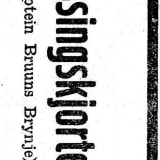
1936: Tidlig versjon av Brynje-trøyene selges i Oslo
En annonse i lørdagsavisen 14. mars 1936 viser at Mehrens Herreekvipering i Rosenkratzgate i Oslo solgte to typer Brynje-trøyer: “Ei grøvre trøye, for utearbeid og turbruk. Og ei tynnare, også kalla salongbrynja, ved bruk av snipp”. Denne passet godt til daglig bruk i byen.
-
1940
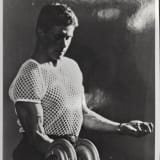
1940: Feltartilleri-regimentet tester Brynje-trøyer
For første gang ble Brynje-trøya prøvd ut av en hel feltbataljon. I et brev adressert til Brun går det frem at i alt 600 brynjer ble utdelt. Lovordene stod i kø: 1) «Ved de stikkprøver, som fra tid til annen er foretatt for å bringe mannskapenes inntrykk på det rene, har svaret alltid vært det samme, at dens ventilerende og isolerende egenskaper fullt ut tilsvarer de forventninger, som man etter forhåndsreklamen hadde stillet.» (Kaptein Egers, sjef for Stabsbatteriet) 2) «Soldatene greide å holde seg varme selv i den strengeste kulde (- 30). Grunnen til dette var at soldatene i tillegg til bekledningen hadde fått utlevert en «brynje». Denne ble benyttet av samtlige soldater og alle var vel fornøyd med den.» (Kaptein Smith, sjef for 3. feltbatteri) 3) «Guttene likte de utleverte brynjer svært godt» (Kaptein Hellum, sjef for 4. feltbatteri)
-
1942

1942: Tungtvannsaksjonen på Vemork
“String vest” sto oppført på utstyrslistene til norske og britiske soldater som deltok i tungtvannsaksjonen på Vemork, Rjukan. Det er overveiende sannsynlig at det her var snakk om Henrik Bruns Brynje-trøye; disse trøyene var nå benyttet av mange i Forsvaret.
-
1945 - 1953
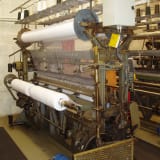
1945 - 1953: Anbud fra Forsvaret - flere begynner å lage helsetrøyer
Etter krigen ville Forsvaret ha helsetrøya produsert, og familiebedriften Jacobsen i Larvik fattet interesse for “Bruns brynje”. Det var maskinstrikk som var bøygen for Brun; han hadde verken maskiner eller penger til å få trøya produsert. Da Brun kom til Jacobsen hadde han vært rundt på flere steder uten hell. Etter krigen hadde Brun dessuten fått en landssviksdom, så Forsvaret ville ikke lenger ha noe med ham å gjøre. Jacobsen hadde Raschel-maskiner, og i samarbeid med Hæren og Brun utviklet familien en prototype av trøya. På første anbud som Forsvaret lyste ut, var det imidlertid hele 14 bedrifter som deltok. Ved offentlige anbud er det lov å kopiere og gjøre patent tilgjengelige for andre. Dermed så mange sitt snitt til å utnytte muligheten - med det resultat at det ikke var Jacobsen, men en produsent lengre nord i landet som vant anbudet. Årsaken var selvsagt pris. Brynje har opplevd dette mange ganger, da vi ikke er billigst og heller ikke er villige til å fire verken på kvalitet eller prinsipper. Det er tøft, men slik er spillereglene.
-
1953
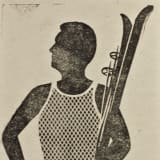
1953: Jacobsen kjøper merkenavnet Brynje
Familiebedriften Jacobsen gav ikke opp selv om de tapte Forsvarets første anbud. I stedet så de seg om etter andre steder å selge Brynje-trøya, og i den forbindelse oppsto behovet for et merkenavn til trøya. I juli 1953 kjøpte J. Jacobsen trikotasje og konfeksjon merkenavnet “Brynje” av kaptein Brun for 2000 kroner. Samtidig endret bedriften navn fra « J. Jacobsen trikotasje og konfeksjon» til «Brynje Trikotasjefabrikk AS». Senere ble navnet endret til «Brynje of Norway». Brun var glad for i det hele tatt å få noe tilbake for arbeidet med Brynje-trøya. Summen var en god slump penger etter datidens mål; Norge var jo et av de fattigste landene i Europa på dette tidspunktet. Jacobsen hadde tro på oppfinnelsen og Brun fikk sikret at verket hans ble videreført. Bruns oppfinnelse gjorde at trikotasjefabrikken i Larvik gikk over fra damemote og barneklær til plagg for aktive, militæret, sport og friluftsliv. Etter krigen la folk også mer vekt på fritid og bruk av naturen, noe som var fordelaktig for Brynje. På det meste leverte virksomheten et volum på over 200.000 plagg. Helsetrøya har vært med på flere motebølger der Brynje av og til ikke har klart å produsere nok. Brynje-trøya er og blir en eksportsukesss fra Uvdal. Det finnes ikke maken. Kaptein Brun var en dyktig kar og Brynje retter en stor takk til Brun og oppfinnelsen hans. For selv om Brun havnet på feil side under krigen, er det viktig å gi ham oppreisning. Dette var en flott nordmann som var blant de tøffeste. Han ville forsvare Norge og ønsket å gi Forsvaret en bedre utrustning enn de hadde før krigen. Brynje of Norway gir Kaptein Henrik Brun all heder.
-
1953: Til topps på Mt. Everest med Hillary og Tenzing. Fotfeste i utlandet.
Da engelskmannen Hunt planla sin berømte Everest ekspedisjon sjokkerte han med helt nye teorier om vekt, hurtighet, bekledning og komfort. Hele ekspedisjonen ble utstyrt med Brynje helsetrøyer, og 29. mai 1953 sto Sir Edmund Hillary og Tenzing Norgay på toppen av verdens høyeste fjell. Både Hillary og Tenzing hadde på seg Brynjes helsetrøye innerst mot huden. Vi var den første undertrøye på 8848 m og siterer helten: "We knocked the bastard off".
-
1959

1959: Ingemar Johansson sponset av Brynje
Ingemar Johansson, verdensmester i tungvektsboksing, ble sponset av Brynje med trøyer og et honorar på 1500 kr. Johansson var en av de første idrettsstjernene som ble sponset av en undertøysfabrikant.
-
1960

1960: Rettsak mot EKT helsetrøyer
Edvin Thorson Jr., mannen bak EKT helsetrøye, var en av mange som startet å lage helsetrøyer rett etter krigen. Selv om EKT helsetrøyer ble laget på Brynjes maskiner, var de fremdeles en konkurrent. Helsetrøyene til EKT og Brynje ble etter hvert like store i Norge, men selv om Thorson var tidlig ute var det Brynje som hadde videreutviklet trøya i samarbeid med Forsvaret. Det var Brynje som lagde den første maskinproduserte trøya og som kjøpte og registrerte om merkenavnet. Brynje gikk til rettssak mot EKT om merkenavnet Brynje og vant saken. Enden på visa var at Brynje kjøpte tilbake maskinene fra Thorson da han la opp. Brynje overtok også retten til å produsere under navnet EKT til faste kunder og til Langedrag Naturpark i Nore og Uvdal. Senere har det vært flere merkevaresaker knyttet til bruk av benevnelsene "helsetrøye" og "brynje".
-
1976: Super Thermo netting ble født
Syntetisk garn kom på markedet og Brynje utviklet Super Thermo netting. Nå fikk Brynje-trøya nye egenskaper som gav unike fortrinn i form av lav vekt, fukttransport, lynrask tørking, topp isolasjonsevne og ekstrem slitestyrke.
-
1984: Krigsskole-rapport om egenskapene til nettingundertøy i polypropylene
Ekstremt lav vekt, tar opp minimalt med fukt og “er den mest varmeisolerende fiber på markedet. Isolerer endog bedre enn ull på samme volumbasis. Her har selvsagt den konstruksjonsmessige oppbygning av artikler en stor rolle.”
-
1988: SINTEF kårer Super Thermo netting til “best i test”
Sintef slår fast at Super Thermo netting av polycolon er det undertøyet som tørker raskest og isolerer best innerst mot huden.
-
1993

1993: Knut Holmann vant VM-gull med Super Thermo
Knut Holmann var i den absolutte verdenstoppen gjennom 1990-årene og er beskrevet som «Norges største sommer-olympier». I 1993 tok han VM-gull og sølv i København med en kortermet Super Thermo nettingtrøye innerst mot huden.
-
1993: Brynje rev sin gamle fabrikk og flyttet til Øya 41 i Larvik
Den dag i dag holder Brynje til på Øya 41 i Larvik. Ta gjerne turen innom vårt fabrikkutsalg!
-
1994
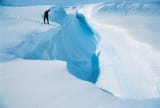
1994: Unarmed to the South Pole
Brynje var med Lars Ebbesen, Odd Harald Hauge og Cato Zahl Pedersen til Sydpolen. Gutta brukte Brynje Super Thermo netting innerst mot huden; dette var første gang man benyttet helsyntetisk undertøy innerst mot huden på en polferd. Det skulle vise seg å fungere helt utmerket.
-
1997: Arctic Double ble født og vant innovasjonspris
Arctic Double-serien ble født etter 5 års utvikling og vant Teko innovasjonspris. Gjennom tett samarbeid med utallige iskalde ekspedisjoner kom vi frem til at netting med et lag ull utenpå måtte være en vinner. Nettingen forsterker ullens beste sider og våt-ull-følelsen ble avlivet. Med ett hadde vi et utrolig varmt og funksjonelt produkt, som også viste seg å være et skikkelig koseplagg.
-
1998: Nordpolen m/ Sjur Mørdre og Lars Ebbesen
Brynje var med Sjur Mørdre og Lars Ebbesen til Nordpolen. - Jeg har ikke vært kald en eneste gang på 30 dager i polhavet, skrev Sjur i sitt brev til Brynje.
-
2000 - 2001: Sydpolen med Liv Arnesen og Ann Bancroft
Liv Arnesen ble, sammen med Ann Bancroft, den første kvinnen som krysset Antarktis på ski. Turen tok 94 dager. Innerst mot huden hadde de Brynje.
-
2001

2001: Krysning av Antarktis v/ Rolf Bae og Eirik Sønnerland
Brynje var med på verdens til da lengste skiekspedisjon med Rolf Bae og Eirik Sønnerland.
-
2003

2003: Andreas Ebbesen (13) krysset Grønland
Andreas Ebbesen ble tidenes yngste (13) som har krysset Grønland.
-
2004: Mt. Everest med Randi Skaug
20. mai 2004 ble Randi Skaug fra Åsbygda første norske kvinne på Mt. Everest. Fjellturen hadde ett mål: Å mestre. Og hun klarte det! Vi er stolte over å ha Randi som vår ambassadør.
-
2010

2010: Raskeste solo krysning av Sydpolen v/ Christian Eide
Christian Eide nådde Sydpolen på rekordtid - med Brynje innerst mot huden.
-
2010

2010: Pål Anders Ullevålseter tok 2. plass i Rally Dakar
Pål Anders Ullevålseter har deltatt i Rally Dakar 12 ganger, med andreplass i 2010 som beste plassering. Da kjørte han med Brynje trøye og stilongs innerst mot huden. Pål brukte den samme stilongsen og trøya i mange år og sverger fremdeles til Brynje.
-
2011 - 2012

2011 - 2012: Teodor Glomnes blir verdens yngste til å krysse Antarktis
20 år gammel ble Teodor Glomnes Johansen verdens yngste til å krysse Antarktis.
-
2013

2013: Nettbutikken www.brynje.no ble født
Brynjes nye nettbutikk, www.brynje.no, ble lansert. Gurusoft i Sandefjord ble valgt som leverandør av netthandelsløsningen.
-
2013 - 2014

2013 - 2014: Sykkel til Sydpolen m/ Juan Menendez Granados
Juan Menendez Granados var den første som syklet solo og uhjulpet til Sydpolen. Året før syklet han også over Grønland.
-
2016

2016: Frode Lein, ekstremløp på 250 km mot Sydpolen
Frode Lein var blant de fire første i historien som fullførte løpet “The last Desert” med 250 kilometer mot Sydpolen. Vi er stolte over å ha Frode som vår ambassadør.
-
2018

2018: Frode Lein løper Yukon Arctic Ultra
Frode Lein ble nummer tre i Yukon Arctic Ultra. Løpet omtales som verdens kaldeste og tøffeste ultra med 483 kilometer. Med -54 grader ble 2018 historiens kaldeste versjon av det 15 år gamle løpet.
-
2019: Brynje lanserer Expedition skall
Brynje lanserer skalljakke, skallbukse og votter. Dette er robuste plagg beregnet for høyfjell og ekspedisjonsbruk som gir beskyttelse under de mest krevende forhold. Skallproduktene fikk meget god mottakelse.
-
2020: Norsk Polarinstitutt valgte Brynje Expedition skallbekledning
Brynje of Norway ble valgt som leverandør av skallbekledning til de ansatte ved Norsk Polarinstitutt.
-
2020
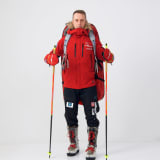
2020: Frode Lein fullførte Iditarod Trail Invitational
Iditarod forbindes gjerne med TV-bilder av Lars Monsen og andre hundekjørere som forserer Alaskas villmark i "The Toughest Race on Earth". Som deltaker i Iditarod Trail Invitational kan to-beinte deltakere velge mellom sykkel, ski - eller for de som vil gjøre det ekstra vanskelig for seg selv – joggesko og truger. Ekstremløper og Brynje-ambassadør Frode Lein valgte det siste alternativet.
-
2020

2020: Thomas Lone ble Norges yngste på Seven Summits (24 år)
5. januar 2020 ble Thomas Lone Norges yngste (24 år) til å fullføre The Seven Summits. Vi er stolte over å ha Thomas som vår ambassadør.
-
2020: Brynje ble Miljøfyrtårn-sertifisert
I juni 2020 ble Brynje sertifisert som Miljøfyrtårn-bedrift. Det er vi veldig stolte av!
-
2020: Linn Therese Helgesen (15) besteg alle 377 norske fjell over 2000 m
8. august 2020 besteg Linn Therese Helgesen (15) den siste norske fjelltoppen over 2000 meter med 10 meter som primærfaktor. Til sammen hadde hun besteget 377 topper. Hun er Norges yngste som har klart dette og dermed har hun tatt en historisk rekord som det skal bli meget vanskelig å slå.
-
2022: Brynje åpnet butikk i Kongens gt. 16 i Oslo
I juli 2022 åpnet Brynje ny butikk i Kongens gt. 16 i Oslo. Fra før hadde vi butikk og Outlet i Larvik. Velkommen!
-
2022: Kristin Harila i Himalaya
Kristin Harila satte verdensrekord i å klatre alle verdens 14 fjell over 8000 meter på èn sesong. Hun prøvde først i 2022 og gjennomførte drømmen i 2023. Kristin benyttet både Super Thermo netting, Wool Thermo netting og Brynje Arctic i Himalaya.
-
2025: Hege Victoria Dypdalsbakk, raskeste norske kvinne til Sydpolen
Hege Victoria ble raskeste norske kvinne til å nå Sydpolen. Innerst mot huden hadde hun Brynje Super Thermo netting fra topp til tå.

